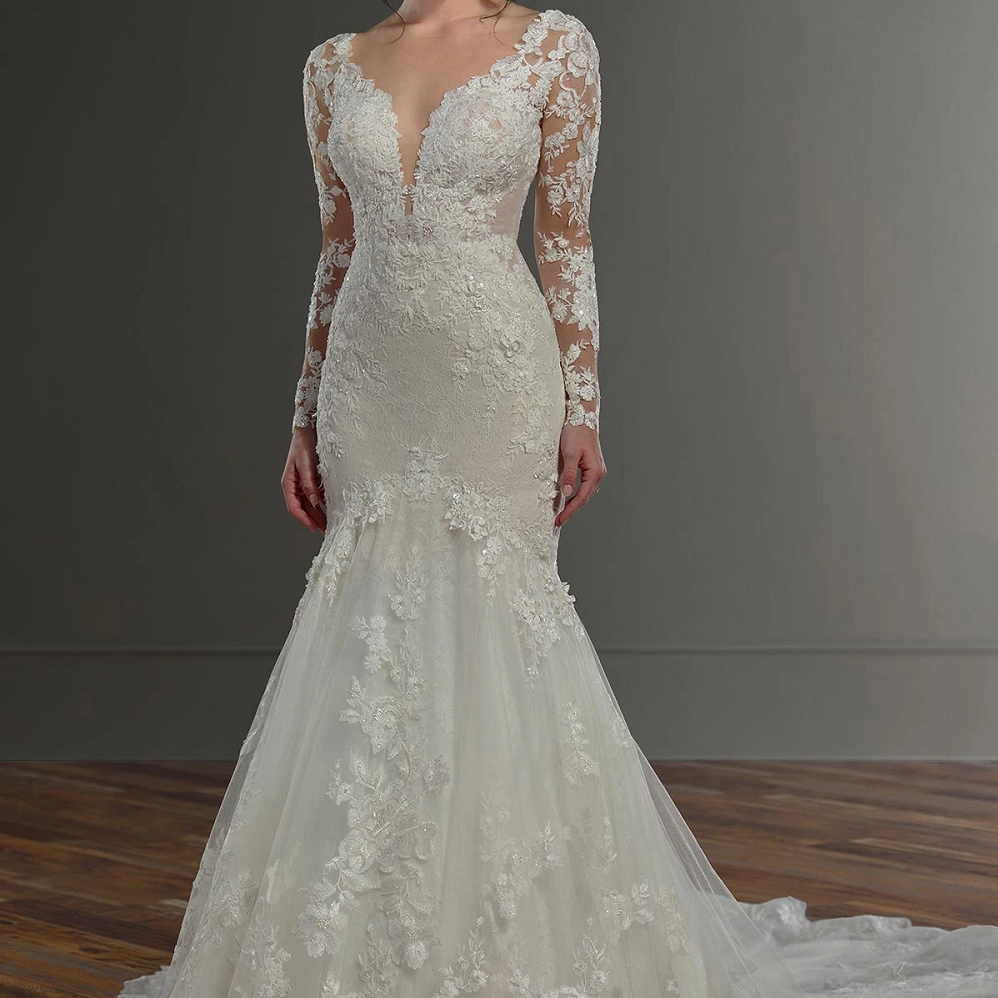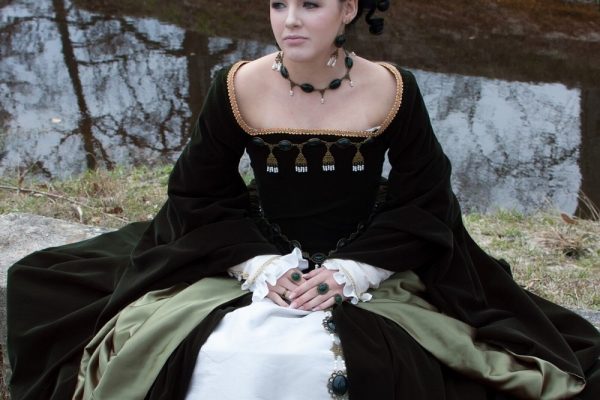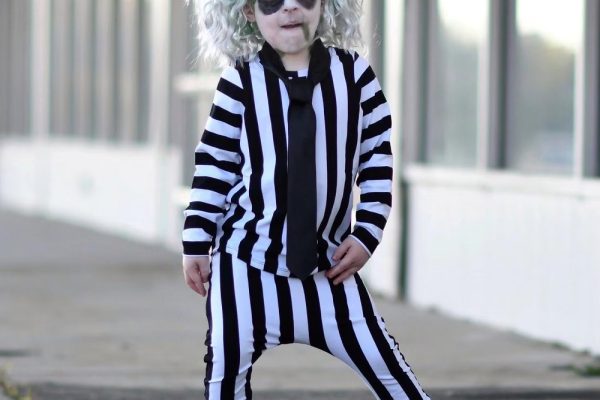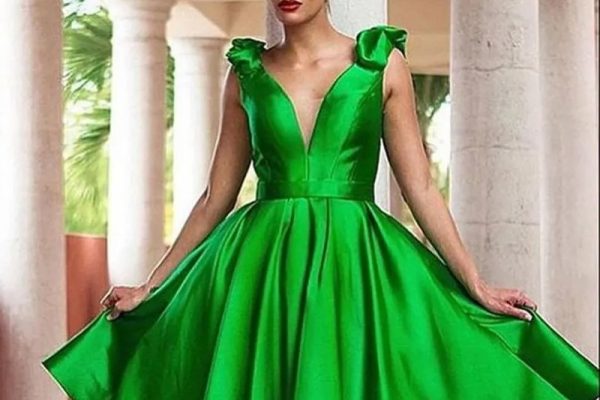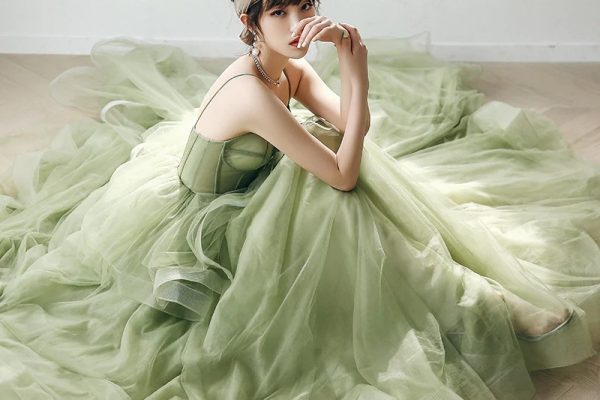Popular Formal Wedding Dress Silhouettes
Formal wedding dress come in various silhouettes to suit different body types and preferences. Choosing the right style enhances your elegance and highlights your personality. Below are some popular wedding dress silhouettes to consider for your big day.
A-Line Dresses
A-line dresses are timeless and flattering for most brides. Their fitted bodice and flowing skirt create a simple yet elegant look. These dresses work well with different fabrics like lace, satin, or organza. The versatility of A-line gowns makes them suitable for both formal and semi-formal weddings.
Ball Gown Styles
Ball gowns exude fairy tale vibes and offer a dramatic presence. They feature a fitted bodice and a voluminous skirt. This silhouette is ideal for brides wanting a regal look. Ball gowns often include intricate embellishments such as beading or lace for added sophistication.
Mermaid and Trumpet Gowns
Mermaid and trumpet gowns emphasize curves and create a glamorous silhouette. The fitted design hugs the body from the bodice down to the knees. From there, the skirt flares out elegantly. These styles are perfect for brides who want a sexy, modern look while maintaining formal charm.
Sheath and Column Dresses
Sheath and column dresses are sleek and minimalist. They feature straight designs that skim the body for a chic appearance. These dresses are perfect for petite brides or those preferring less volume. Sheath styles often pair well with lightweight fabrics like silk or tulle for added comfort and sophistication.
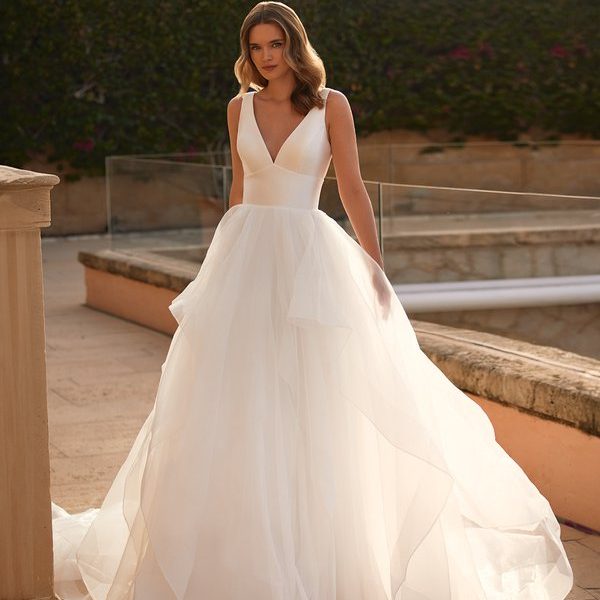
Choosing the Right Fabric for Your Wedding Dress
Selecting the right fabric is key to achieving the perfect formal wedding dress. The fabric sets the tone and influences the dress’s look, feel, and comfort. Here is a guide to popular fabric choices for formal wedding dress.
Satin and Silk
Satin and silk are classic choices for formal wedding dress. These fabrics offer a luxurious texture and elegant shine. Satin is heavier and structured, ideal for creating dramatic silhouettes like ball gowns. Silk is softer and has a natural fluidity, which works beautifully for sheath or A-line dresses. Both fabrics exude sophistication and are perfect for traditional weddings.
Lace Detailing
Lace instantly adds romance and intricacy to a wedding dress. This fabric is highly versatile and works with various dress styles, from A-line to mermaid gowns. Lace can be bold or delicate, depending on the pattern and density. It often complements embellishments like beading or embroidery. Brides seeking timeless elegance often lean toward lace for their formal wedding dress.
Tulle and Organza
Tulle and organza are lightweight and airy fabrics perfect for dramatic and voluminous skirts. The tulle is commonly used for layers in ball gowns to create a floating appearance. Organza, while slightly stiffer, provides structure without feeling heavy. Both fabrics lend an ethereal quality to wedding dresses, making them ideal for formal settings. These choices are also popular for brides desiring a whimsical, fairy-tale look.
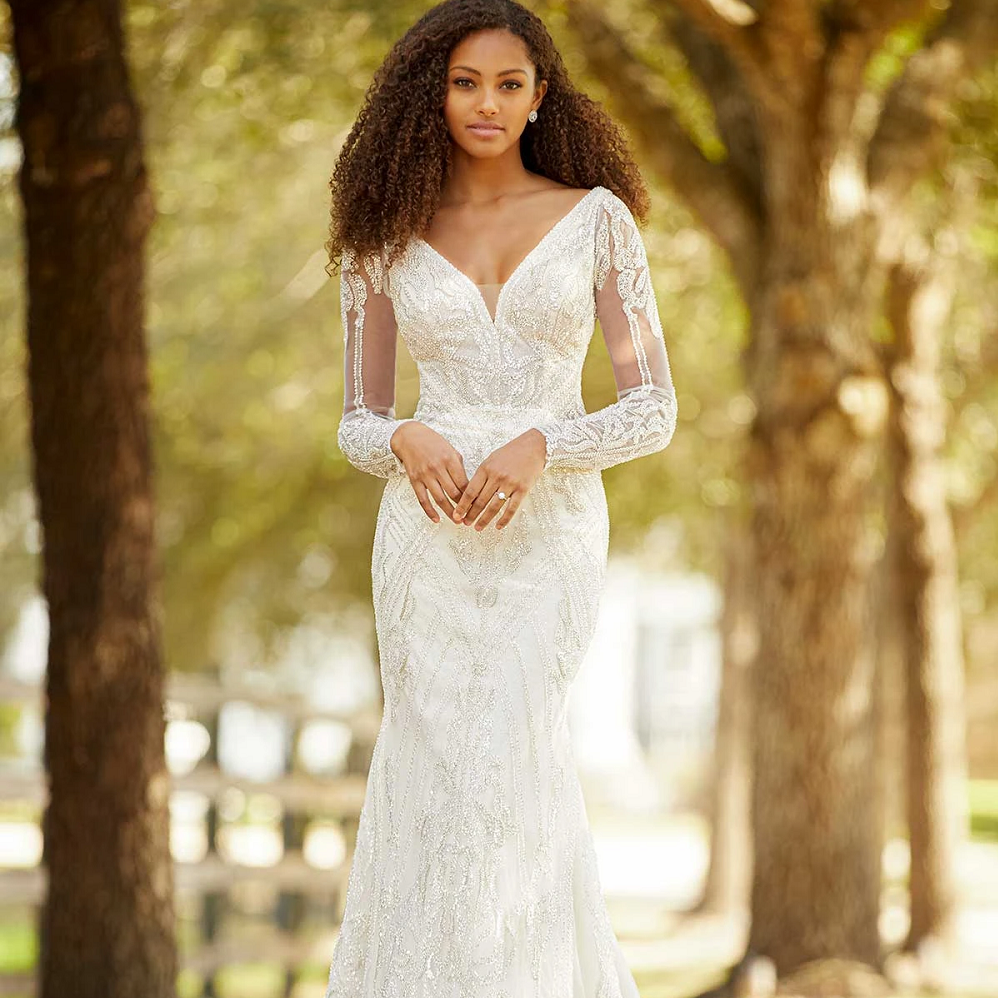
Timeless Colors for Formal Wedding Dresses
Choosing the perfect color for your formal wedding dress is crucial. The right shade sets the tone for your bridal look. While traditional colors remain popular, modern brides also explore unique options. Here are some timeless and trending colors to consider.
Classic Ivory and White
Ivory and white wedding dresses are timeless options. They symbolize purity and elegance. White gowns offer a crisp, clean appearance, perfect for traditional ceremonies. Ivory, with its soft hue, adds a touch of warmth and sophistication. Both colors pair beautifully with intricate details like lace and beading.
Blush and Neutral Shades
Blush and neutral tones are ideal for soft and romantic vibes. Shades like champagne, nude, and soft pink provide warmth and subtle elegance. These colors suit brides looking for something unique but not overly dramatic. Neutral tones also blend beautifully with outdoor or garden wedding settings.
Bold and Unique Color Options
For those wanting to make a statement, bold colors are an exciting choice. Shades like deep red, royal blue, or even black offer a dramatic and modern twist. Metallic tones, such as gold or silver, add luxurious sophistication. Unique colors work well for themed weddings or brides seeking a non-traditional look.
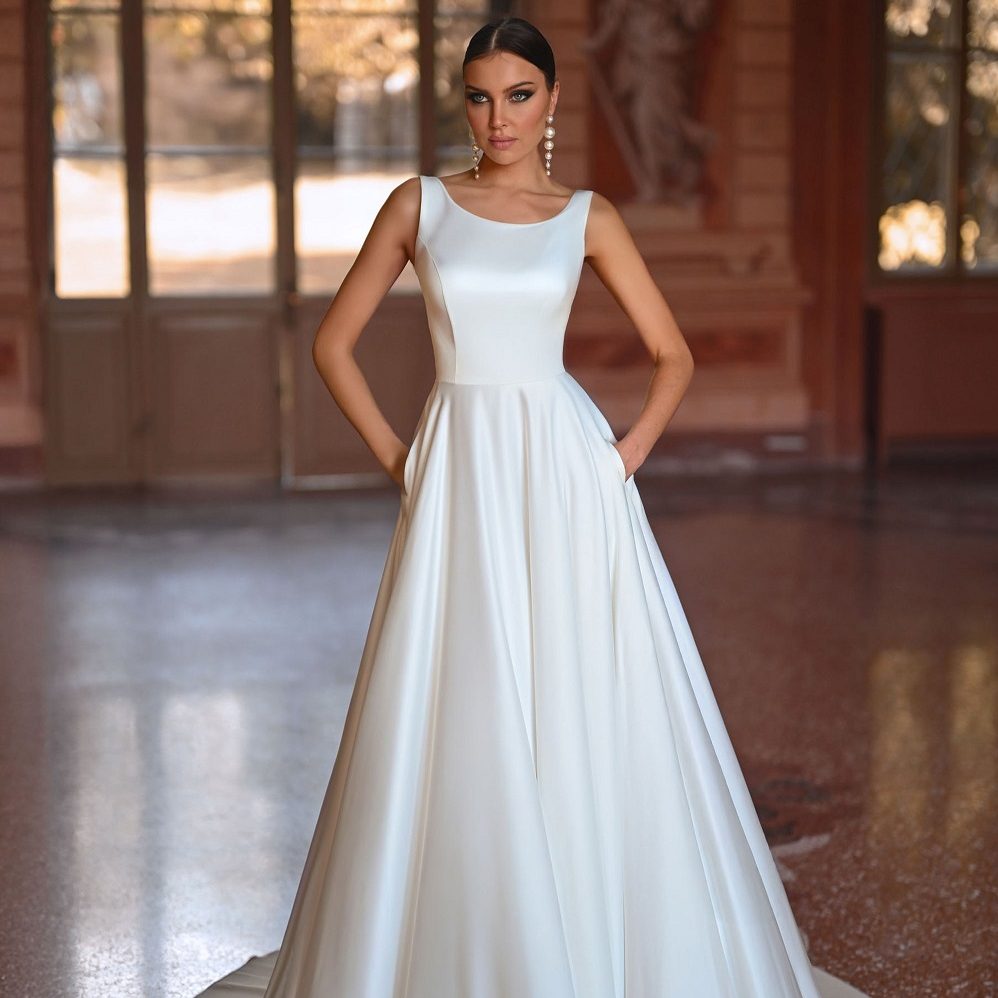
Embellishments and Accessories to Enhance Your Look
Embellishments and accessories play a big role in elevating your formal wedding dress. Thoughtful details can transform a beautiful gown into a truly stunning look. From intricate beading to elegant veils, choosing the right additions ensures a cohesive and polished bridal style. Below are some popular options to consider.
Beading and Sequins
Beading and sequins add a sparkle that enhances the elegance of a formal wedding dress. They can be subtle or bold, depending on your preference. Beading works well on bodices, hemlines, or sleeves, creating a chic and luxurious feel. Sequins add shimmer and are ideal for evening or glamorous ceremonies. Both embellishments pair beautifully with fabrics like lace, satin, or tulle.
Statement Belts and Sashes
Statement belts and sashes are simple but impactful accessories. They highlight your waist and enhance your silhouette. A jeweled or embroidered belt adds a bit of glamour to minimalist dresses. Satin or ribbon sashes can introduce a pop of color, matching your wedding theme. These details are perfect for adding personality to your bridal look.
Veil and Headpiece Options
Veils and headpieces complete a formal bridal look with elegance. Long cathedral veils make a dramatic statement, especially with ball gown dresses. Shorter veils, such as birdcage or elbow-length styles, offer vintage charm. For headpieces, consider tiaras, floral crowns, or combs adorned with pearls or crystals. These accessories highlight your hairstyle while adding sophistication.
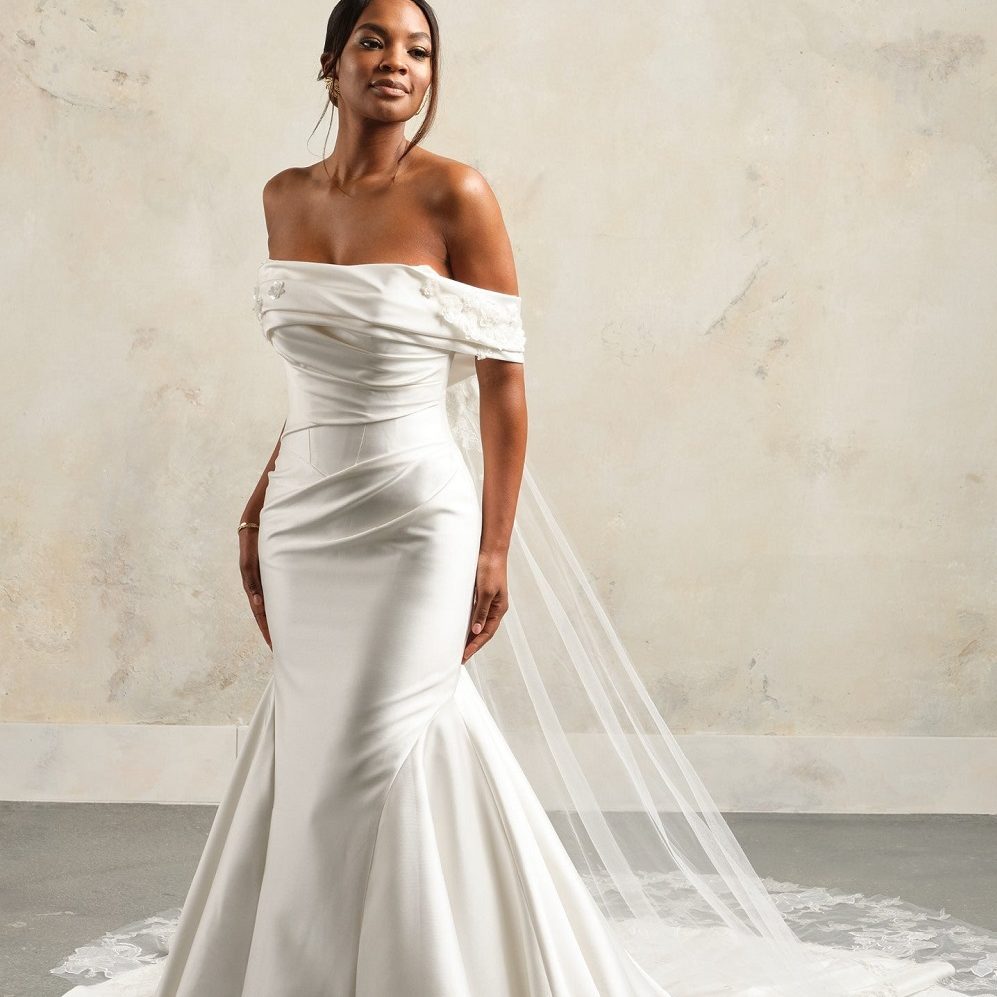
Formal Wedding Dress Trends for Current Seasons
Stay in tune with the latest formal wedding dress trends to inspire modern and stylish bridal looks. Current seasons showcase a mix of contemporary elegance and timeless charm, ensuring every bride finds a trend to suit her.
Minimalist and Classic Styles
Minimalist wedding dresses are becoming increasingly popular. Brides are opting for clean cuts and simple designs. These styles focus on sleek silhouettes, devoid of heavy embellishments. Fabrics like satin or silk enhance the elegance of these looks. Classic features such as bateau necklines, long sleeves, and subtle buttons also make a strong comeback. This trend is ideal for brides who want understated yet refined sophistication.
Modern Glamour Trends
Modern glamour wedding dresses are all about bold and striking elements. Brides love shimmering fabrics, metallic accents, and dramatic features. Off-the-shoulder styles, high slits, and plunging necklines are highly favored. Glamorous trains and layered skirts add extra drama to these designs. This trend resonates with brides who desire a bold, fashion-forward statement on their big day.
Vintage-Inspired Designs
Vintage-inspired wedding dresses are perfect for brides seeking timeless elegance. Lace detailing, puffed sleeves, and high necklines are signature elements of this trend. Tea-length dresses and romantic floral embroidery also exude vintage charm. These styles blend classic aesthetics with modern tailoring, creating a refined and unique bridal look. Ideal for themed or traditional ceremonies, vintage designs remain a beloved choice for brides everywhere.
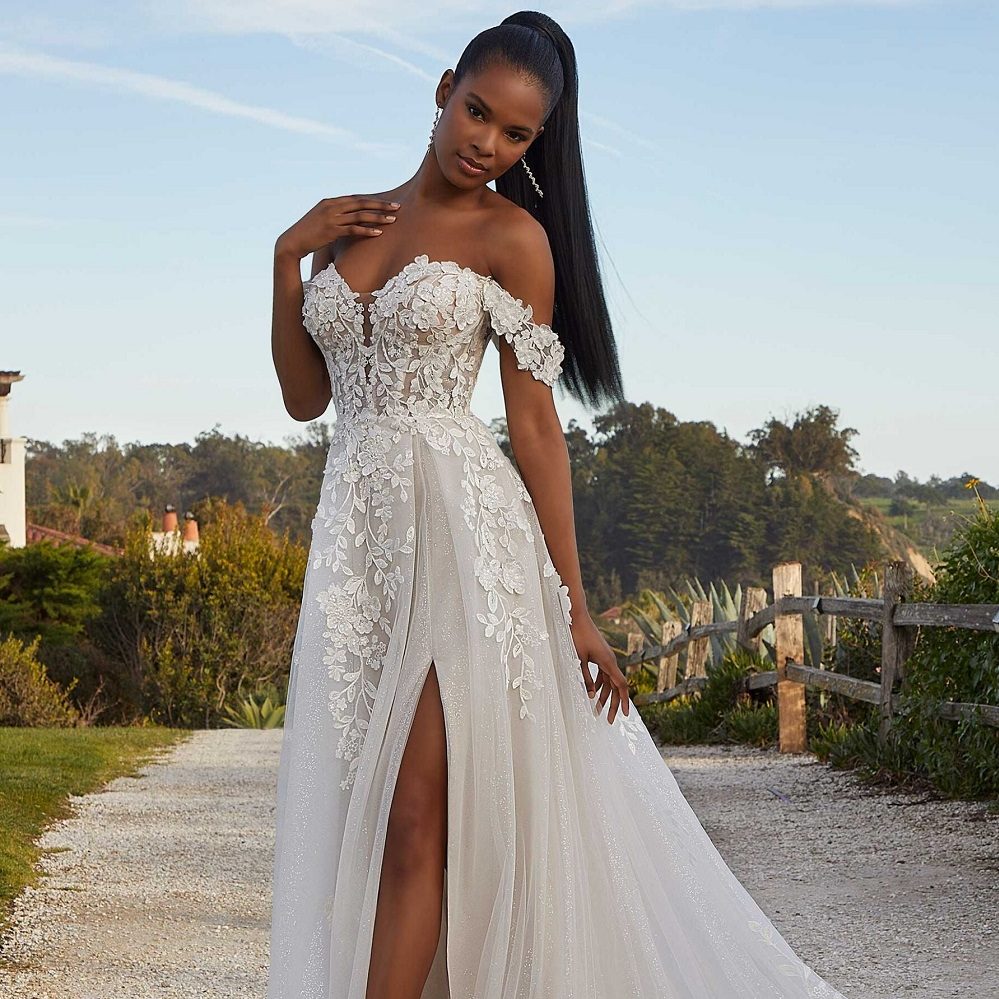
Tips for Finding the Perfect Formal Wedding Dress
Dress Shopping Do’s and Don’ts
Finding the perfect formal wedding dress takes time and effort. Follow these do’s and don’ts for a smoother experience:
Do’s:
- Start early. Begin shopping 8-12 months before the wedding to allow for fittings.
- Set a budget. Decide on a clear budget to avoid overspending.
- Research styles. Know which silhouettes, fabrics, and designs you prefer.
- Visit multiple stores. Explore different shops to see a variety of options.
- Bring support. Take close friends or family whose opinions you trust.
Don’ts:
- Don’t ignore comfort. Ensure the dress fits comfortably for long wear.
- Don’t skip undergarments. Bring the right undergarments to fittings.
- Don’t try too many dresses. Limit options to avoid confusion.
- Don’t forget venue vibes. Match your dress style to the wedding setting.
- Don’t rush decisions. Take your time to find a gown you truly love.
Working with a Tailor or Seamstress
Fittings are essential for a flawless bridal look. Here’s how to get the best results:
- Schedule fittings early. Plan multiple fittings to perfect the fit.
- Choose an experienced tailor. Look for professionals specializing in wedding dresses.
- Communicate preferences. Clearly share your expectations with the seamstress.
- Bring accessories. Wear your shoes and undergarments for accurate fittings.
- Check alterations carefully. Inspect every detail during your final fitting.
Finalizing Your Look for the Big Day
After finding your dress and making alterations, focus on completing your bridal look:
- Choose accessories. Select jewelry, a veil, or a headpiece to complement your gown.
- Plan your hairstyle. Work with a stylist to match your hair with your dress’s neckline.
- Practice walking. Practice walking, sitting, and dancing in your dress.
- Store it properly. Keep the dress in a cool, dry place before the wedding.
- Have a backup kit. Prepare a sewing kit for emergencies on the wedding day.
Styling Your Bridal Party to Match
Coordinating your bridal party ensures a cohesive and polished look for your wedding day. Thoughtfully styled bridesmaids and groomsmen elevate your overall theme and aesthetic. Below are tips for achieving harmony among your bridal party’s attire and accessories.
Coordinating Bridesmaid Dresses
Selecting matching or complementary dresses for your bridesmaids can create a unified appearance. Consider these approaches:
- Choose a color palette. Pick shades that complement your dress and wedding theme.
- Mix and match styles. Allow bridesmaids to choose dress styles that suit their body types.
- Stick to a fabric. Use the same material for consistency, such as chiffon or satin.
- Incorporate subtle details. Lace accents or beading can tie the look to your formal wedding dress.
- Follow the venue vibe. Match dress formality with the wedding setting, whether it’s indoors or outdoors.
Choosing Formal Attire for Groomsmen
Groomsmen attire should align with both the groom’s outfit and the overall wedding style. Here’s how to coordinate:
- Match the groom. Use colors or accessories that tie back to the groom’s look.
- Stick to the theme. Ensure groomsmen suits fit the event’s level of formality.
- Consider ties and pocket squares. Match these accessories to the bridesmaids’ dresses for a cohesive touch.
- Plan for footwear. Give groomsmen clear guidelines regarding formal shoes.
- Add personalized details. Boutonnieres, cufflinks, or vests can set the groomsmen apart.
Accessorizing Your Wedding Party
Accessories allow for a personalized yet coordinated look across all bridal party members. Key tips include:
- Unify jewelry. Select matching earrings or necklaces for bridesmaids.
- Coordinate bouquets. Ensure bouquets mirror the bride’s floral arrangement in color and style.
- Use matching tones. Align any hairpieces or sashes with the wedding’s color scheme.
- Groomsmen accessories. Add uniform touches like matching ties, suspenders, or cufflinks.
- Keep it subtle. Avoid overtly large or clashing accessories to maintain elegance.
Carefully styling your bridal party ensures a seamless visual flow throughout your wedding. Thoughtful coordination enhances photos and creates a memorable, unified celebration.
Maintaining and Preserving Your Wedding Dress
Your wedding dress holds memories of your big day. Proper care ensures it stays beautiful forever. Below are tips to maintain and preserve your formal wedding dress before and after the wedding.
Tips for Pre-Wedding Care
Taking care of your wedding dress before the ceremony is crucial. Follow these steps to avoid damage:
- Store in a safe place. Keep the dress in a cool, dry location away from sunlight.
- Use a garment bag. Protect your gown with a breathable bag to prevent dust and moisture.
- Avoid unnecessary handling. Limit touching the dress to reduce risk of stains or tears.
- Schedule fittings early. Allow enough time for alterations without rushing.
- Follow cleaning instructions. If needed, clean the dress as instructed before the big day.
- Transport with care. Use proper packaging when moving the dress to avoid wrinkles or damage.
Post-Wedding Preservation Methods
Preserving your wedding dress after the ceremony keeps it in pristine condition for years. Here are key steps:
- Clean immediately. Remove stains and dirt shortly after the wedding to prevent permanent marks.
- Use professional cleaning. Choose a specialist experienced in cleaning formal wedding dress.
- Avoid regular dry cleaning. Only use cleaning methods safe for your dress fabric and embellishments.
- Store properly. Use acid-free tissue paper and an archival storage box to prevent discoloration.
- Keep away from humidity. Store in a climate-controlled area free from moisture and direct light.
- Inspect periodically. Check the dress annually for signs of damage or wear.
Pre- and post-wedding care ensure your formal wedding dress remains timeless and elegant. These steps protect your gown’s sentimental value and beauty for the future.
